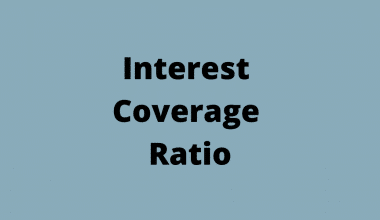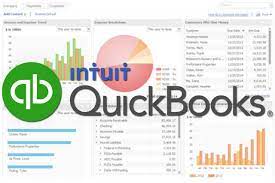Free cash flow is an essential metric since it demonstrates how effective a company is at earning cash. Investors evaluate free cash flow to determine whether a company has enough cash to pay dividends or buy back shares. Furthermore, the greater a company’s free cash flow, the better positioned it is to pay down debt and pursue possibilities that can improve its business. Thus, it makes it an appealing choice for investors.
This article will explain how a firm can calculate free cash flow and how to use that amount to select appropriate projects that will provide a return on investment.
What Is Free Cash Flow (FCF)?
Free cash flow (FCF) is the cash a company generates after deducting cash outflows for operations and capital asset maintenance. In other words, free cash flow is the cash left over after a corporation pays its operational and capital expenses (CapEx).
FCF is the money left over after paying for things like payroll, rent, and taxes, and it can be used any way the company sees fit. Knowing how to calculate and analyze free cash flow will aid a company’s cash management. FCF calculation will also provide investors with financial insight into a company, allowing them to make smarter investment decisions.
How Do You Calculate Free Cash Flow?
There are various methods for calculating free cash flow, but they all should calculate the same result. Because not all companies provide the same financial information, investors and analysts adopt the method of calculating free cash flow that best fits the data they have. To calculate free cash flow, subtract a company’s capital expenditures from its operational cash flow.
Because no two businesses have identical financial accounts, there are three distinct ways to calculate free cash flow. Given the information provided by a corporation, the final number should be the same regardless of the method employed. Operating cash flow, sales revenue, and net operating profits are the three methods used to calculate free cash flow.
#1. How To Calculate Free Cash Flow Using Operating Cash Flow
The most common way is to calculate free cash flow using operating cash flow since it is the simplest and uses two quantities that may be found in financial statements: operating cash flow and capital expenditures. To calculate FCF, find the item cash flow from operations (also known as “operating cash” or “net cash from operational activities”) on the cash flow statement and remove capital expenditure from the balance sheet.
The formula is as follows:
Free Cash Flow = Operating Cash Flow – Capital Expenditures
Free Cash Flow Formula
#2. How To Calculate Free Cash Flow Using Sales Revenue
Using sales revenue focuses on the revenue generated by a company’s operations and then subtracts the costs associated with creating that revenue. The income statement and balance sheet are used as information sources in this strategy. To calculate FCF, find sales or revenue on the income statement and remove the total of taxes and all operational costs (often known as “operating expenses”). It include items like cost of goods sold (COGS) and selling, general, and administrative charges (SG&A).
Finally, subtract from the balance sheet the required investments in operating capital, often known as the net investment in operating capital.
The formula is as follows:
Free Cash Flow = Sales Revenue – (Operating Costs + Taxes) – Required Investments in Operating Capital
Free Cash Flow Formula
where:
Required Investments in Operating Capital=Year One Total Net Operating Capital −Year Two Total Net Operating Capital
and where:
Total Net Operating Capital=Net Operating Working Capital +Net Plant, Property, and Equipment(Operating Long-Term Assets)
and where:
Net Operating Working Capital=Operating Current Assets −Operating Current Liabilities
and where:
Operating Current Assets=Cash +Accounts Receivables+InventoryOperating Current Liabilities=Accounts Payables +Accruals
#3. How To Calculate Free Cash Flow Using Net Operating Profits
The computation of free cash flow using net operating profits after taxes (NOPATs) is identical to that of sales revenue, except that operating income is used.
The formula is as follows:
Free Cash Flow=Net Operating Profit After Taxes −Net Investment in Operating Capital
Free Cash Flow Formula
where:
Net Operating Profit After Taxes=Operating Income ×(1 – Tax Rate)
and where:
Operating Income= Gross Profits − Operating Expenses
Net Operating Profit After Taxes = Free Cash Flow – Operating Capital Net Investment
where:
Operating Income = Net Operating Profit After Taxes * (1 – Tax Rate)
as well as where:
Operating Income= Gross Profits – Operating Expenses
The computation for net operational capital investment is the same as described before.
What is the FCF (Free Cash Flow) Formula?
Cash from Operations minus Capital Expenditures is the general Free Cash Flow FCF Formula. FCF is the amount of cash created by a business after accounting for the company’s reinvestment in non-current capital assets. This statistic is also known as Free Cash Flow to Equity or Free Cash Flow to the Firm.
Formula:
FCF = Cash from Operations – Capital Expenditure
Steps To Deducing The Free Cash Flow Formula
If you don’t have the cash flow statement handy, you can calculate Cash From Operations and Capital Expenditures from the income statement and balance sheet. From the outset, we will walk through each of the processes required to derive the FCF Formula.
Step #1: Operating Cash Flow and Net Income
Net income + any non-cash expenses, adjusted for changes in non-cash working capital, equals cash from operations (accounts receivable, inventory, accounts payable, etc).
As a result, the Cash From Operations (CFO) formula is:
CFO = Net Income + Non-cash Expenses – Non-cash Net Working Capital Increase
Step #2. Non-Cash Expenses
Non-cash expenses can be further subdivided into the sum of all items on the income statement that do not influence cash.
Depreciation and amortization, stock-based compensation, impairment charges, and investment gains/losses are the most typical items that do not affect cash.
As a result, the formula for non-cash adjustments is as follows:
Adjustments = depreciation + amortization + stock-based compensation + impairment charges + gains/losses on investments
Step #3: Non-Cash Net Working Capital Changes
Calculating changes in non-cash net working capital is often the most difficult stage in developing the FCF Formula, especially if the company’s balance sheet is complex.
Accounts receivable, inventory, and accounts payable are the most typical factors that influence the formula (on a simple balance sheet).
As a result, the formula for changes in non-cash working capital is as follows:
Changes = (2017 AR – 2016 AR) + (2017 Inventory – 2016 Inventory) – (2017 AP – 2016 AP)
Where,
- AR stands for accounts receivable.
- AP stands for accounts payable.
- 2017 is the current year.
- 2016 is the previous year.
Step #4. Capital Expenditures
Capital expenditures (CapEx) for a corporation can be calculated without using the cash flow statement. To accomplish this, we can apply the following formula with balance sheet and income statement line items.
As a result, the capital expenditures formula is:
CapEx = 2017 PP&E – 2016 PP&E + Depreciation & Amortization
Step #5: Assembling the FCF Formula Components
We may merge the four stages above into a single long FCF formula.
The Full FCF Formula is as follows:
FCF = Net Income + [depreciation + amortization + stock-based compensation + impairment charges + gains/losses on investments] – [(2017 AR – 2016 AR) + (2017 Inventory – 2016 Inventory) – (2017 AP – 2016 AP)] – [2017 PP&E – 2016 PP&E + Depreciation & Amortization] – [2017 PP&E – 2016 PP&E + Depreciation & Am
or
FCF = Net Income + Non-Cash Expenses – Working Capital Increase – Capital Expenditures
In practice, it would be impossible to calculate FCF using a single formula. Instead, as we demonstrated in the first four parts of the derivation, it is frequently done as a series of discrete calculations.
The simplified formula is as follows:
FCF = Cash from Operations – Capital Expenditure
What Does FCF Stand For?
The amount of cash created each year that is free and clear of all internal and external obligations is referred to as free cash flow. In other words, it represents the cash that the corporation may invest or distribute to shareholders with confidence. While a solid FCF statistic is often regarded as a favorable sign by investors, it is critical to comprehend the context surrounding the figure. For example, a company may have a high FCF because it is deferring significant CapEx investments, in which case the high FCF could be an early warning sign of future troubles.
Use and Relevance
The free cash flow equation has numerous applications. These are the details: –
- To calculate a company’s profitability.
- Obtaining a financial position in a business.
- The free cash flow formula assists a corporation in making decisions about new products, loans, and commercial prospects.
- The free cash flow formula assists in determining the amount of cash available for distribution to corporate owners.
Assume a company’s FCF is high. It denotes that a corporation has the cash to introduce a new product, expand its operation, and grow. Still, if a company has a low FCF, a large investment may be viable, and the company may expand in the long run. This is because FCF assists investors in calculating their lucrative returns on investment in a specific company.
How to Calculate FCF Examples
Here are two examples of real-world FCF from two separate companies, Chevron and Nike. First, from Chevron’s third-quarter 2020 public disclosure of its statement of cash flows:
- (Net cash created by operating activities of $8.3 million minus capital expenditures of $6.9 million) Equals $1.4 million in free cash flow in the first nine months of 2020.
In addition, according to Nike’s 2020 second-quarter filing, under the consolidated statement of cash flows:
- (Cash provided by operations of $3.4 billion) minus $344 million in additions to property, plant, and equipment Equals $3.02 billion in free cash flow for the six months ending November 30, 2020.
As you can see, FCF is computed for all types of businesses, including those that require significant investments in property and equipment, such as Chevron, and those that rely heavily on non-physical assets, such as branding and e-commerce sites, such as Nike. Whatever the company performs for business, FCF is a basic measure of cash left over at the conclusion of a specified time period. This residual cash is available to the corporation for debt repayment, dividend payments to shareholders, or stock repurchase schemes (all of which are recorded in the “financing activities” section of the cash flow statement). The free cash flow figure can also be used in a discounted cash flow model to forecast a company’s future value.
What Distinguishes FCF From Net Income and EBITDA?
Free cash flow is distinct from a company’s net earnings or net loss, which are used to calculate the popular earnings per share (EPS) and price-to-earnings (P/E) ratios. FCF removes non-cash factors such as depreciation and amortization (accounting for the values of assets paid for in the past for tax purposes), changes in inventory values, and stock-based employee compensation. Because FCF only includes cash transactions, it provides a more accurate view of a company’s profitability.
FCF can also disclose whether a corporation is tampering with its earnings, such as by selling assets (a non-operating line item) or altering the value of its product inventory. Alternatively, if a corporation just made a substantial acquisition (such as purchasing a new property or investing in new intangible assets), free cash flow could be larger than net income – or even positive even if the company records a net loss.
FCF is also distinct from EBITDA (earnings before interest, tax, depreciation, and amortization). In contrast to FCF, EBITDA removes both debt interest and tax payments. EBITDA, like FCF, can assist in revealing a company’s genuine cash-generating capacity and in comparing one firm’s profit potential to that of a peer.
Fcf Is Critical, Yet It Has Limitations.
When compared to net income, FCF provides a more realistic picture of a company’s financial health and is more difficult to manipulate; yet, it is not ideal. It can be a more “lumpier” number than net income because it represents cash remaining at the conclusion of a certain time. If a corporation, for example, purchases the new property, FCF may be negative although net income remains positive.
Similarly, FCF can be positive even though net income is significantly lower or even negative. If a corporation receives a significant one-time payment for services delivered, its FCF is very likely to remain positive even if amortization charges are substantial (like the costs of software and other intangible assets for a cloud computing company).
Because of the short-term volatility inherent in FCF, many investors prefer to analyze a company’s health using net income, which smooths out the peaks and valleys in profitability. However, when viewed over time, FCF provides a more accurate representation of a company’s actual operating results. FCF can also be used to assess a company’s ability to pay off debt and make dividend payments.
Investors should be wary of negative FCF reported for an extended period of time. Negative FCF depletes a company’s cash and assets, and when a company is short on finances, it may need to reduce or abolish its dividend or raise more cash through the sale of new debt or stock.
Frequently Asked Questions
What is a good free cash flow ratio?
A ratio less than one suggests concerns with short-term cash flow; a ratio larger than one indicates good financial health, as it implies cash flow that is more than sufficient to meet short-term financial obligations.
Can FCF be negative?
Yes. A corporation with negative free cash flow is unable to generate enough cash to support its operations. The cash a corporation has left over after paying its operating expenses is tracked by free cash flow. Net profit margins that are declining imply very high expenses.
Why is free cash flow more important than net income?
This is because free cash flow demonstrates how much earnings a company has available for discretionary use, such as investing in expansion, paying dividends, or accumulating cash for future use.
Related Articles
- INDIRECT METHOD CASH FLOW: Formula & Examples
- Operating Cash Flow: Uses and Its Applications
- ACCUMULATED AMORTIZATION: Definition And All You Should Know
- INCOME STATEMENT: Formats, Examples, and How To Prepare One
- Cash Flow Statement Indirect Method: Overview, Examples, Calculations






